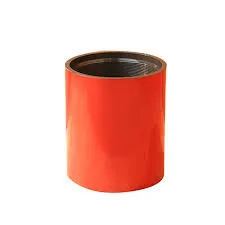- Afrikaans
- Albanian
- Amharic
- Arabic
- Armenian
- Azerbaijani
- Basque
- Belarusian
- Bengali
- Bosnian
- Bulgarian
- Catalan
- Cebuano
- Corsican
- Croatian
- Czech
- Danish
- Dutch
- English
- Esperanto
- Estonian
- Finnish
- French
- Frisian
- Galician
- Georgian
- German
- Greek
- Gujarati
- Haitian Creole
- hausa
- hawaiian
- Hebrew
- Hindi
- Miao
- Hungarian
- Icelandic
- igbo
- Indonesian
- irish
- Italian
- Japanese
- Javanese
- Kannada
- kazakh
- Khmer
- Rwandese
- Korean
- Kurdish
- Kyrgyz
- Lao
- Latin
- Latvian
- Lithuanian
- Luxembourgish
- Macedonian
- Malgashi
- Malay
- Malayalam
- Maltese
- Maori
- Marathi
- Mongolian
- Myanmar
- Nepali
- Norwegian
- Norwegian
- Occitan
- Pashto
- Persian
- Polish
- Portuguese
- Punjabi
- Romanian
- Russian
- Samoan
- Scottish Gaelic
- Serbian
- Sesotho
- Shona
- Sindhi
- Sinhala
- Slovak
- Slovenian
- Somali
- Spanish
- Sundanese
- Swahili
- Swedish
- Tagalog
- Tajik
- Tamil
- Tatar
- Telugu
- Thai
- Turkish
- Turkmen
- Ukrainian
- Urdu
- Uighur
- Uzbek
- Vietnamese
- Welsh
- Bantu
- Yiddish
- Yoruba
- Zulu
what is the difference between casing and tubing?
Understanding the Difference Between Casing and Tubing in Oil and Gas Wells
In the oil and gas industry, drilling and extraction processes involve various components designed to ensure efficiency, safety, and longevity. Two of the most critical components are casing and tubing. While both serve essential functions in the overall operation of oil and gas wells, they have distinct characteristics and purposes that set them apart. Understanding these differences can enhance appreciation for the complexity of drilling engineering and production operations.
What is Casing?
Casing is a series of pipes that are installed in the borehole during the drilling process. After drilling to the desired depth, casing is inserted to provide structural integrity to the wellbore. It stabilizes the well and prevents the walls from collapsing under geological pressure. Casing also serves as a barrier to isolate the different layers of rock, liquids, and gases encountered during drilling.
Casing is typically made of steel and comes in different sizes and grades, determined by factors such as the borehole's depth and the specific geological conditions. The installation of casing is critical; once it is placed, cement is often pumped into the annulus between the casing and the borehole wall. This cementing process forms a protective sheath around the casing, further ensuring the well's integrity and sealing off any potential pathways for fluids to migrate to the surface or between formations.
What is Tubing?
Tubing, on the other hand, is a smaller-diameter pipe inserted within the casing. It serves as the conduit through which oil or gas is produced from the reservoir to the surface. Tubing allows for the extraction of hydrocarbons under controlled conditions and enables the transport of production fluids efficiently. The design and material of tubing vary according to the specific production requirements and operational pressures expected during extraction.
Unlike casing, which is intended to remain in place for the life of the well, tubing is more dynamic. It can be pulled out and replaced as needed, especially when wear and tear occur or when changes in production methods are needed. Tubing must be capable of enduring the corrosive properties of the fluids being extracted and must be able to handle the pressure of the reservoir.
what is the difference between casing and tubing?

Key Differences Between Casing and Tubing
1. Purpose and Functionality The primary purpose of casing is to provide structural support and isolate different geology layers, while tubing is specifically designed for transporting production fluids to the surface.
2. Structure and Placement Casing is installed first, forming a protective shell within the borehole, while tubing is inserted later within the casing, making it an internal component.
3. Material and Size Casing generally comes in larger diameters compared to tubing, and while both can be made from steel and require specific grades based on their respective jobs, tubing must withstand the specific pressures and corrosive environments prevalent in oil and gas operations.
4. Longevity and Maintenance Casing is usually intended to remain intact for the lifetime of the well and is often cemented in place, while tubing can be removed and replaced based on operational needs or wear conditions.
5. Installation Process The installation of casing involves advanced cementing techniques to ensure stability, whereas tubing installation focuses more on the functional aspects of fluid transport rather than structural integrity.
Conclusion
In summary, both casing and tubing are integral to the function and safety of oil and gas wells, yet they serve fundamentally different roles. Casing provides wellbore stability and geological isolation, while tubing focuses on the efficient extraction of hydrocarbons. Understanding these differences not only highlights the complexity of the drilling and production processes but also emphasizes the importance of choosing appropriate materials and techniques for successful oil and gas recovery. This knowledge is crucial for engineers, operators, and anyone involved in the energy sector, as it forms the backbone of effective and safe hydrocarbon extraction.
-
Tubing Pup Joints: Essential Components for Oil and Gas OperationsNewsJul.10,2025
-
Pup Joints: Essential Components for Reliable Drilling OperationsNewsJul.10,2025
-
Pipe Couplings: Connecting Your World EfficientlyNewsJul.10,2025
-
Mastering Oilfield Operations with Quality Tubing and CasingNewsJul.10,2025
-
High-Quality Casing Couplings for Every NeedNewsJul.10,2025
-
Boost Your Drilling Efficiency with Premium Crossover Tools & Seating NipplesNewsJul.10,2025







